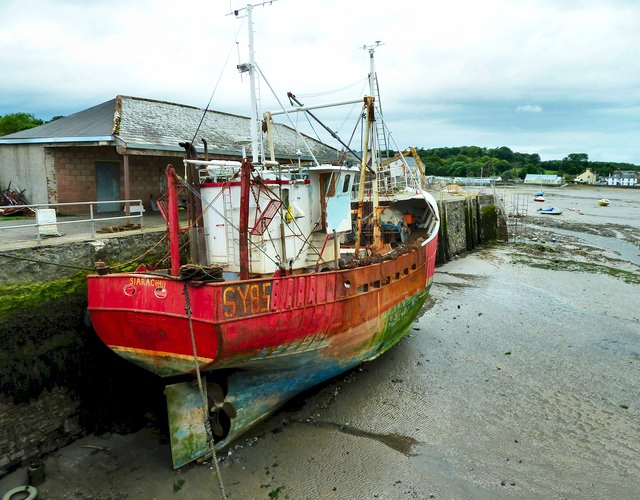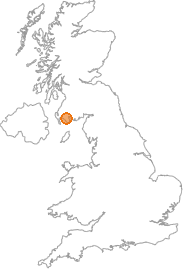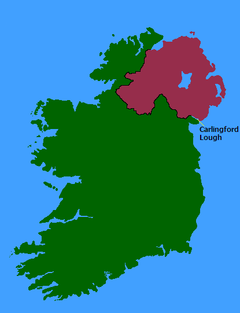Artificial radionuclides in the Irish Sea from Sellafield -Increasing levels in Northern Ireland and Scotland

Loch Cairlinn
Carlinford / Cairlinfurd Loch (Wiki)

Loch Cairlinn
Carlinford / Cairlinfurd Loch (Wiki)
….At Garlieston there was an increase in concentrations in mud from 1985 -1997, and at Carlingford in Northern Ireland the concentration of Am-241 in mud appears to be increasing still. This effect of the spread of activity away from Sellafield may continue, at least in the near future…..
Issue 2 (June 2013)
Received 9 May 2012, accepted for publication 19 December 2012, in final form 23 October 2012
Published 13 March 2013
G.J. Hunt, K.S. Leonard* and L M. Hughes*
The concentrations of Cs-137, tritium, Tc-99, Pu-239+240 and Am-241 in representative materials from the Irish Sea were investigated with reference to continuing remobilisation from sediments. Long time series of monitoring data since the 1960s were employed.
Cs-137 in sea water and fish show peaks in concentrations normalised to discharge rate (NACs) from 1985-1989. This is consistent with the time needed for dispersion in sea water following the preceding reductions in discharges; continuing enhancements of NACs above pre-1970s levels follow, consistent with the effect of activity remobilised from sediment. It is estimated that about 300 TBq of Cs-137 were remobilised from the immediate tidal area around Sellafield from 1989-2009. The enhancements in concentrations continue to this day, with the effect of remobilisation at present being ~6 TBq y-1, approximately doubling the effect of direct discharges. To provide an indication for the future, the rate of Cs-137 remobilisation is decreasing with a half-time of ~6 years.
Data for tritium and Tc-99 were examined in view of the interest in these radionuclides. Concentrations broadly reflect the levels of discharges and the need for dispersion. As expected, there is no evidence of sustained remobilisation of tritium, due to its mobility (or low Kd). The same lack of evidence was found to apply for Tc-99 despite known sorption of a small proportion of the discharged activity by Irish Sea sediments.
Pu-239+240, by contrast, shows much evidence of the effect of remobilisation; concentrations in sea water near Sellafield have reduced much slower than the discharges. At Southerness, ~50 km away, there was no significant reduction in sea water concentrations from 1985-1996, and winkles showed an increase then decrease in concentrations over this period, consistent with a spreading of activity. This effect was replicated in mud at Garlieston, ~70 km from Sellafield.
For Am-241, the rate of grow-in from Pu-241 has dominated direct discharges since the late 1970s. Grow-in continues today in the Irish Sea at the rate of ~8 TBq y-1, ~200 times the rate of direct discharge. Winkles at Southerness show evidence of a spreading effect of Am-241, with an increase then decrease from 1985-1996.
 At
Garlieston there was an increase in concentrations in mud from 1985
-1997, and at Carlingford in Northern Ireland the concentration of
Am-241 in mud appears to be increasing still. This effect of the spread
of activity away from Sellafield may continue, at least in the near future.
At
Garlieston there was an increase in concentrations in mud from 1985
-1997, and at Carlingford in Northern Ireland the concentration of
Am-241 in mud appears to be increasing still. This effect of the spread
of activity away from Sellafield may continue, at least in the near future. Reference:
Reference:G.J. Hunt, K.S. Leonard* and L M. Hughes* (2013) Artificial radionuclides in the Irish Sea from Sellafield: remobilisation revisited. Journal of Radiological Protection 33 (2) p261
http://www.cefas.defra.gov.uk/publications-and-data/publication-abstract.aspx?abstract=6753
Invited subscription only..
More contamination in Scotland here..
Clean up radioactive contamination at beach, Gordon Brown tells MoD
Brown will lead a Commons debate on Tuesday, highlighting a letter which he says proves the ministry had already accepted blame.
The memo shows the MoD was willing to take action as early as 1990 for contamination at Dalgety Bay in Fife.
Brown, who is the MP for the area, said: “This letter shows that the ministry must now own up, clean up, pay up and hurry up.
Read more »
----------------------------------


No comments:
Post a Comment